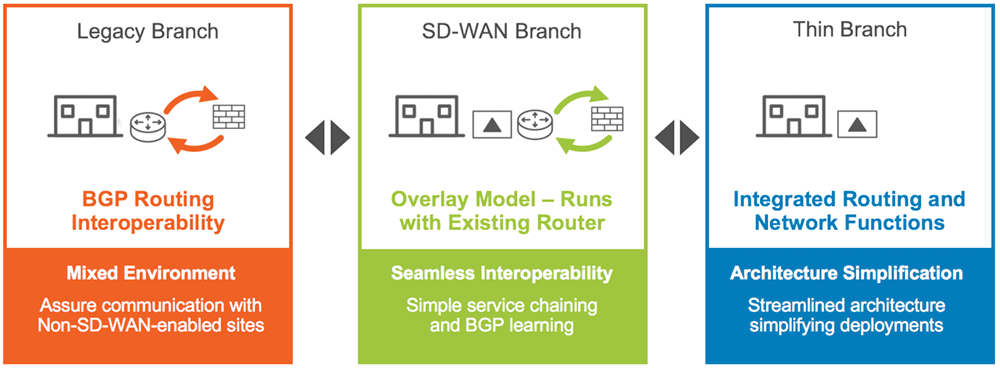Border Gateway Protocol (BGP) is used to exchange routing and reachability information connecting end points together like branches and data centers as well as multihoming for a better redundancy.
As the adoption of SD-WAN accelerates, organizations realize that they can’t transition every site overnight. It’s critical that migration to SD-WAN be accomplished gracefully and at a pace that doesn’t put the business at risk.
BGP routing interoperability provides several benefits to SD-WAN migration and deployments at branch offices and in the data center. To allow customers to migrate to an SD-WAN at their own pace, seamless interoperability with sites or zones not yet on the SD-WAN is imperative.

To reduce migration complexity and the potential for human errors, BGP interoperability enables the automated learning of subnets without having to manually program them.
And for new “greenfield” branch office locations or branches ready for a router refresh, EdgeConnect BGP routing can eliminate the requirement to install a separate router, simplifying the branch WAN edge infrastructure. With fully integrated routing, basic firewalling and optional WAN optimization, customers can now migrate to SD-WAN at their own pace and achieve the operational efficiencies of a Thin Branch. The thin branch is the new branch WAN architecture of the cloud-enabled branch office that is simplified for enterprise IT infrastructure, through the orchestration of consolidated network functions based on business intent.